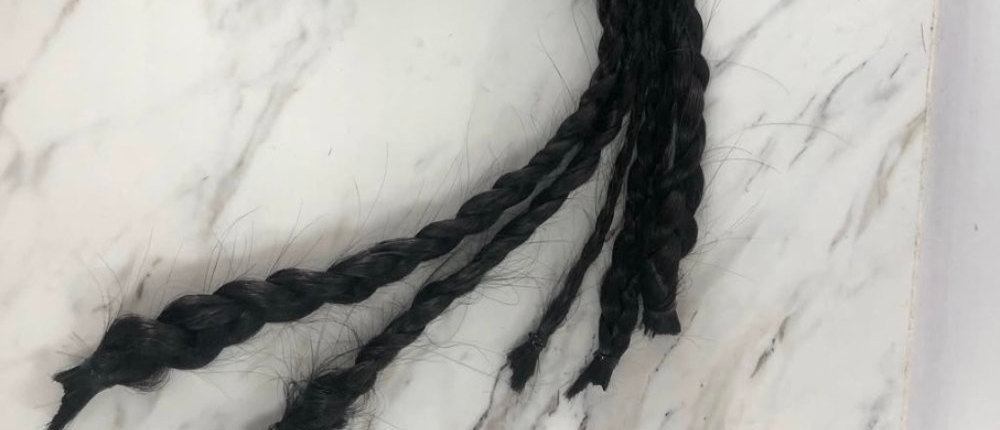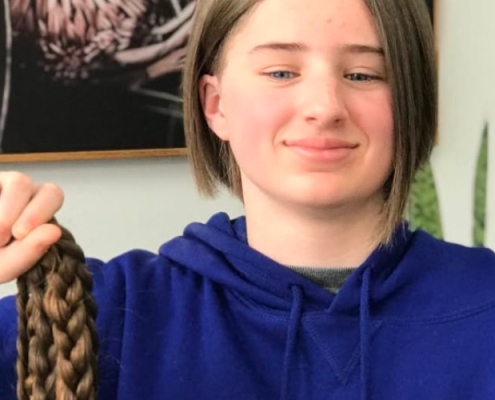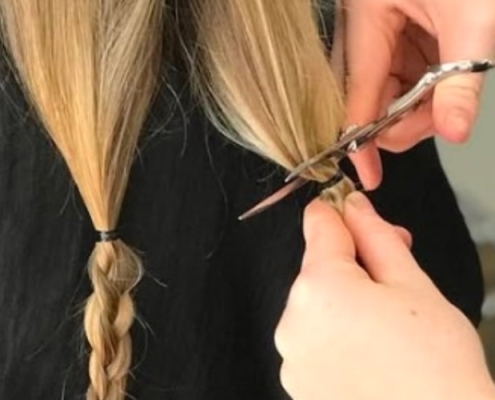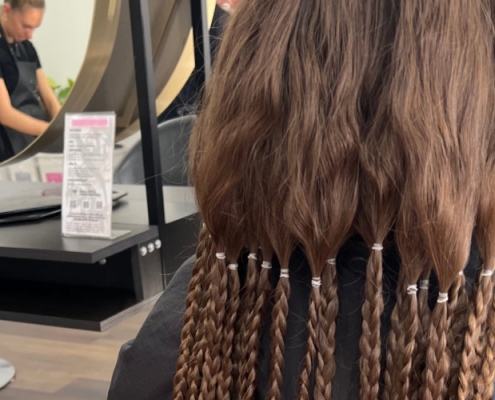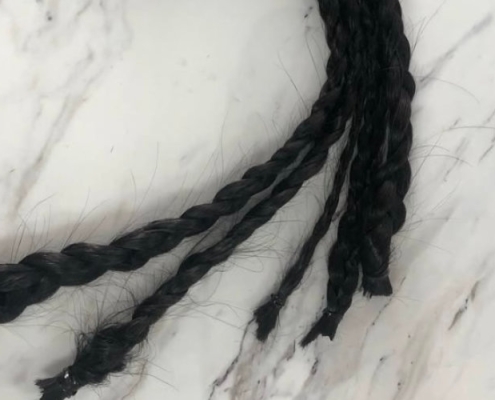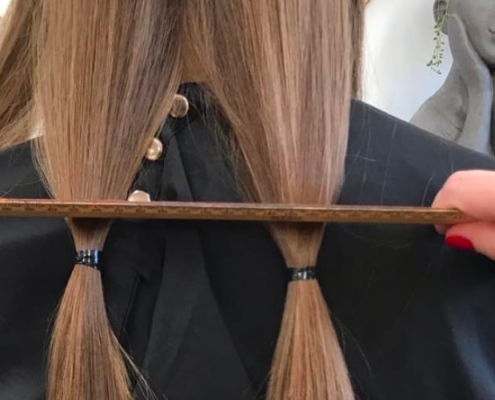What Happens to Your Hair After You Donate It?
Donating your ponytail is a meaningful gesture that provides high-quality, natural wigs for individuals experiencing hair loss due to medical conditions such as cancer, alopecia, and other disorders. But once your hair has been cut and sent to a hair donation organisation, what happens next? Understanding the journey of your hair donation can help you appreciate the impact of your contribution and the meticulous process involved in turning hair into a beautiful, wearable wig.
This article walks you through each stage of the process, from the moment your hair arrives at the donation centre to when it becomes part of a finished wig.
Step 1: Receiving and Sorting Hair Donations
Once your salon sends your ponytail to a hair donation organisation, the first step is sorting. Each donation undergoes an initial evaluation to ensure it meets the organisation’s requirements.
How Hair Is Sorted
- Length: Hair is measured to confirm it meets the minimum length requirement (usually 20–35 cm).
- Condition: Donations are checked for excessive damage, split ends, and other factors that may impact wig quality.
- Colour and Texture: Hair is categorised by colour and texture to create natural-looking wigs.
Hair that does not meet the criteria (e.g., too short, damaged, or improperly cut) may be discarded or repurposed for other uses, such as practice wigs for wigmakers.
Before donating, make sure your hair meets the required standards by checking our guide: Who Can Donate Hair? Requirements and Guidelines.
Step 2: Cleaning and Preparing the Hair
Once sorted, donated hair goes through a thorough cleaning process. This is essential for removing any dust, oils, or residue left from hair products.
The Cleaning Process
- Shampooing and Conditioning: Hair is washed with gentle, residue-free shampoo to cleanse it without causing damage.
- Drying: Hair is air-dried or carefully heat-dried to preserve its natural integrity.
- Disinfection: Some organisations use a mild disinfectant solution to ensure hygiene standards.
Once clean and dry, the hair is bundled and stored until it is ready for the wig-making process.
Step 3: Colour Matching and Blending
To create realistic, natural-looking wigs, donated hair is meticulously blended. Since most wigs require multiple ponytails to achieve a full look, hair from different donors is combined.
Each ponytail is matched by:
- Colour: Hair is grouped into categories such as blonde, brunette, black, and red. Natural variations and highlights are considered to ensure a seamless match.
- Texture: Hair is categorised into straight, wavy, curly, and coiled textures to produce wigs suited to individual preferences.
- Density: Hair thickness is also taken into account to maintain consistency in the final wig.
Step 4: Wig-Making Process
Creating a high-quality wig from donated hair is a highly skilled process. Unlike synthetic wigs, which are machine-made, natural hair wigs require precision handcrafting.
1. Creating the Wig Base
Wigs are constructed on a breathable lace or mesh cap that mimics a natural scalp. These caps provide a comfortable fit and allow for secure attachment.
2. Knotting the Hair
Each individual hair strand is hand-knotted into the cap using a technique that replicates natural hair growth. This process ensures the wig can be styled in different ways, such as parting it on either side or tying it into a ponytail.
3. Securing and Styling
Once the hair is fully knotted, it is trimmed, shaped, and styled according to the recipient’s preferences. Some wigs are left long for custom styling, while others are pre-cut into fashionable styles.
Step 5: Customisation for Wig Recipients
Many hair donation organisations customise wigs to match the preferences and needs of the recipients. This ensures the wig looks as natural as possible and provides the individual with confidence and comfort.
Customisation Includes:
- Personalised Fit: Wigs are adjusted to fit the recipient’s head shape.
- Styling and Cutting: Wigs are trimmed, layered, or styled to resemble the recipient’s previous hair before hair loss.
- Additional Treatments: Some wigs undergo light conditioning or texturising to blend seamlessly with the recipient’s features.
Step 6: Distribution to Those in Need
Once wigs are completed, they are distributed to individuals experiencing hair loss due to medical conditions. Some charities provide wigs free of charge, while others offer them at a reduced cost based on need.
Wig recipients often include:
- Children undergoing chemotherapy
- Adults with alopecia or severe hair loss
- Individuals with medical conditions affecting hair growth
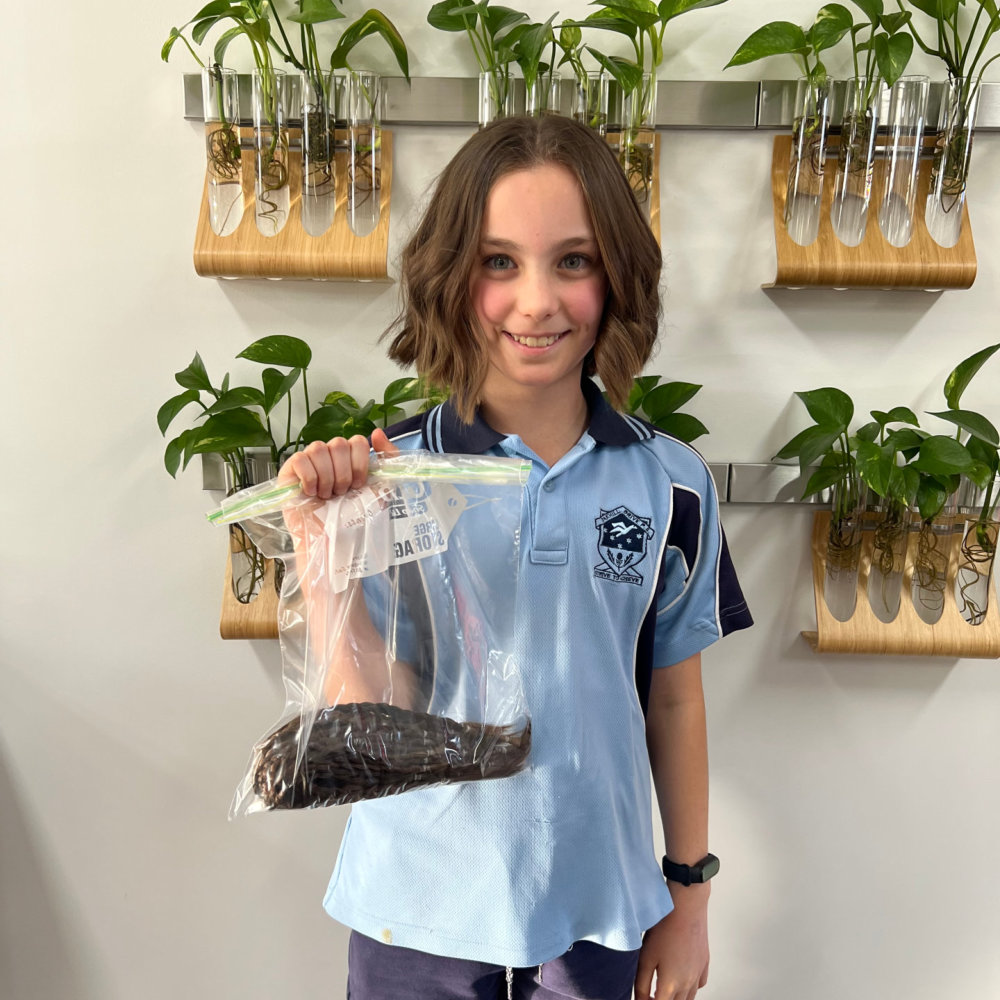
How Your Donation Makes a Difference
Natural wigs can be life-changing for those who receive them. Unlike synthetic wigs, which can be uncomfortable and unnatural-looking, real hair wigs provide a more authentic experience. Recipients often report feeling more confident and emotionally supported after receiving a donated wig.
To learn more about the emotional and social impact of hair donations, read: Why Hair Donations Matter: Supporting Cancer and Alopecia Patients.
Final Thoughts
Your donated ponytail goes through an extensive process before it reaches someone in need. From sorting and cleaning to handcrafting the final wig, every strand of hair plays a role in transforming someone’s life.
If you’re considering donating your hair, make sure it meets the requirements and book an appointment with a professional salon. To learn more about our hair donation services, visit: Ponytail Donations.
Every hair donation brings hope, confidence, and a renewed sense of self to those experiencing hair loss. Your contribution truly makes a difference.

